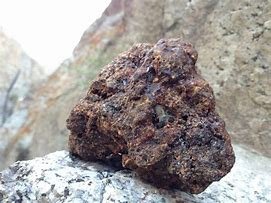Shilajit, a tar-like substance found in the Himalayas, has been a staple of Ayurvedic medicine for centuries. Today, it’s gaining popularity as a natural supplement, touted for a range of health benefits. But with so much conflicting information online, is Shilajit a legitimate wellness tool, or just overhyped? This guide dives into the science behind shilajit, explores its potential benefits and drawbacks, and helps you navigate the world of information on YouTube.
A Gift From the Mountains: Understanding Shilajit’s Origins
Shilajit’s formation is a fascinating story:
Millennia in the Making: Over thousands of years, plants and organic matter decompose in the Himalayas and other high-altitude regions. Minerals from the surrounding rocks also contribute to its unique composition.
Rich in Minerals: Shilajit boasts over 84 minerals in ionic form, meaning they’re readily absorbed by the body. It also contains fulvic acid, a potent antioxidant, and humic acid, which might contribute to its health effects.
YouTube searches for “shilajit ingredients” or “what is shilajit made of” will likely reveal more about its composition and natural origins. While the exact mechanisms of how shilajit works are still being studied, its unique blend of minerals and organic compounds has piqued interest in its potential health benefits.
Shilajit’s Potential Benefits: Fact-Checking the Hype
Shilajit has been linked to various health benefits, but what does science say? Here’s a look at some promising areas of research:
Antioxidant Powerhouse: Shilajit’s fulvic acid content suggests strong antioxidant properties. Antioxidants combat free radicals and unstable molecules that damage cells and contribute to aging and disease. Look for videos on “Shilajit benefits for free radicals” to explore research articles on this topic.
Anti-inflammatory Effects: Early research suggests shilajit might possess anti-inflammatory properties. You might find studies on “shilajit and inflammation” by searching YouTube.
Athletic Performance and Recovery: Some studies suggest shilajit may enhance athletic performance and aid recovery. While searches for “shilajit for athletes” might reveal research articles or anecdotal evidence from fitness enthusiasts, more robust studies are needed.
Cognitive Function and Brain Health: Early research suggests shilajit might improve cognitive function and memory. Searches for “shilajit for brain health” might reveal studies on this topic, but more research is needed to confirm these effects.
Other Potential Benefits: It is also being explored for its potential benefits in managing blood sugar, boosting immunity, and promoting overall well-being. Searches for “shilajit for [specific condition]” might lead to preliminary studies, but strong evidence is lacking for many of these claims.
Navigating YouTube: Prioritizing Credible Sources
Many YouTube channels discuss anecdotal evidence and personal experiences with it. While these can be interesting, remember to prioritize videos from credible sources that discuss scientific research. Look for channels run by medical professionals, licensed dieticians, or scientists for the most accurate information.
Safety and Side Effects: Is Shilajit Right for You?
Before incorporating it into your routine, consider these factors:
Dosage and Quality: Dosing recommendations vary depending on the desired effect and the specific product. Look for reputable brands that provide clear dosage instructions and third-party lab testing to ensure quality and safety.
Potential Side Effects: It might cause side effects like digestive issues, low blood pressure, or allergic reactions in some individuals.
Drug Interactions: Shilajit might interact with certain medications. Consult your doctor before starting it if you take any medications.
While YouTube searches for “shilajit side effects” or “shilajit dosage” might lead to videos discussing these aspects, prioritize videos from medical professionals or licensed dieticians for the most accurate information. It’s crucial to consult your doctor before taking it, especially if you have any underlying health conditions or are pregnant or breastfeeding.
The Takeaway: Embrace a Critical Approach
It holds promise for various health benefits, but more research is needed to confirm its efficacy. By understanding its potential and limitations, you can make informed decisions about incorporating it into your wellness routine. Remember to approach information on YouTube with a critical eye, prioritizing credible sources over sensational claims.
FAQs:-
What are the supposed benefits of Shilajit, a tar-like substance?
Proponents claim it offers a wide range of benefits, including:
Increased energy and stamina
Enhanced athletic performance
Improved immunity
Boosted testosterone levels and male fertility
Anti-inflammatory properties
Cognitive benefits like memory improvement
Is there any scientific evidence to support these claims?
The research on it is ongoing and promising, but with limitations:
Limited studies: Many studies are small-scale, and more research is needed to confirm the benefits.
Mixed results: Some studies show positive effects, while others don’t. The quality and dosage of it can also influence results.
Lack of long-term studies: The long-term effects of its uses are not well-understood.
What are the potential downsides of Shilajit?
Side effects: It can cause digestive issues like diarrhea or stomach upset in some people.
Heavy metal contamination: Some low-quality it may contain heavy metals like arsenic or lead. Buy from reputable sources.
Drug interactions: It might interact with certain medications. Consult your doctor before use if you take any medications.
Are there any safety concerns with Shilajit?
Pregnant or breastfeeding women, and people with certain medical conditions, should avoid Shilajit due to potential risks. Always consult your doctor before starting any new supplement.
Can I find informative YouTube channels discussing Shilajit?
Look for channels run by medical professionals, naturopaths, or registered dietitians who discuss based on scientific evidence.
Be wary of channels making exaggerated claims or promoting miracle cures.
The Bottom Line:
Shilajit, a tar-like substance has a long history of use, and some research suggests potential health benefits. However, more research is needed. If you’re considering trying it, talk to your doctor to ensure it’s safe for you and discuss the potential for interactions with any medications you take.
To read more, Click Here
